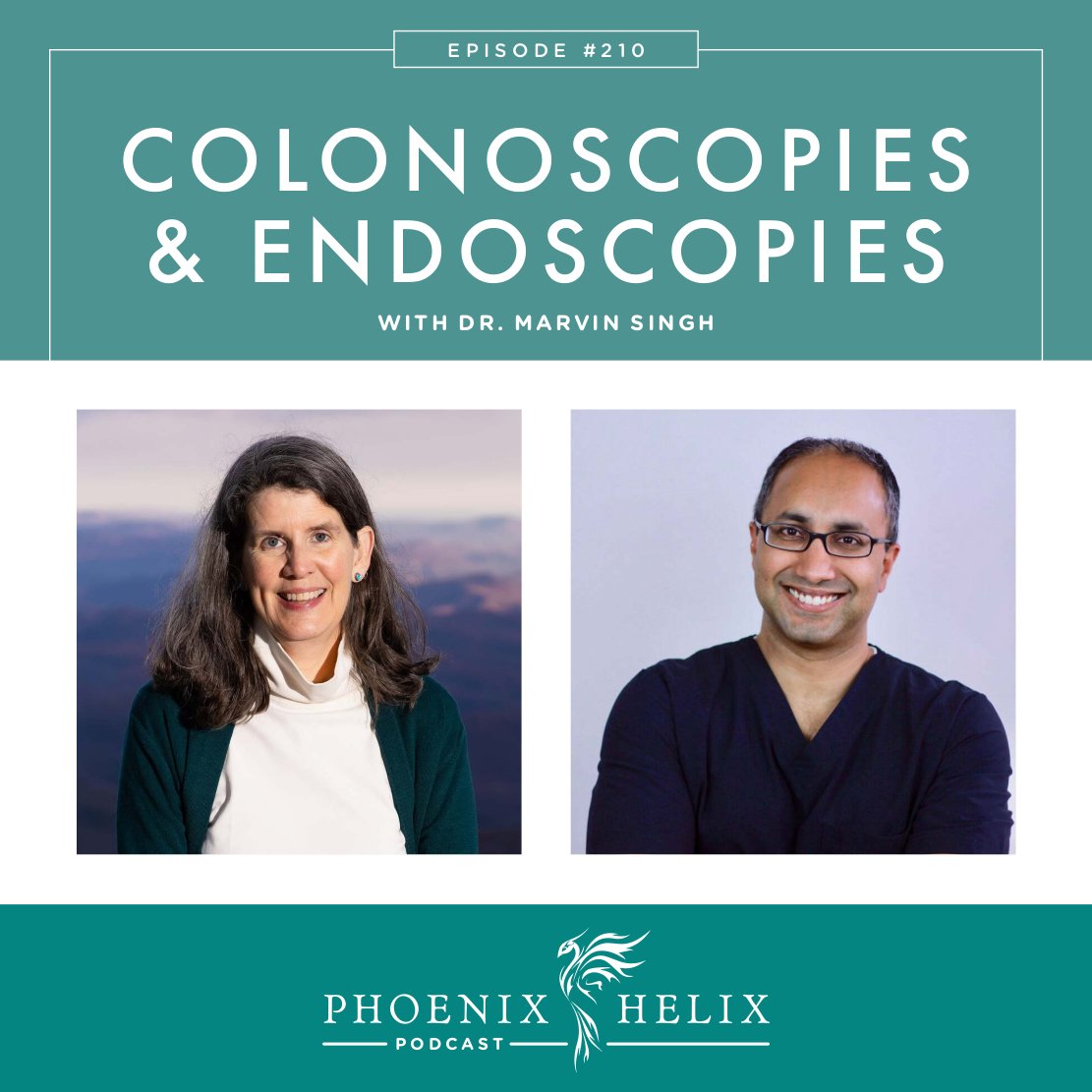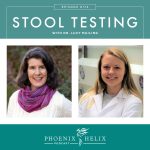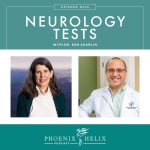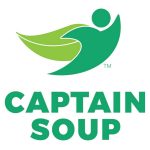Understanding and Preparing for GI Testing
If you have an autoimmune disease that attacks the gastrointestinal (GI) tract, these procedures are important for diagnosis and monitoring your health. They’re also used as screening tools for certain types of cancer and have become an important part of medical care. One of the goals of this podcast is to empower us as patients, helping us better understand the medical care we receive. In this episode, we discuss what these procedures are, how to prepare ourselves mentally and physically beforehand, and how best to recover afterward. My guest today is Dr. Marvin Singh. He’s an MD who is board certified in internal medicine, gastroenterology, and integrative medicine. In addition to performing conventional medical procedures like the ones we’ll be discussing today, he’s also a strong believer in the power of diet and lifestyle to optimize health. Outside of his clinical practice, he’s an author, educator, speaker, and podcast host himself.
Listen to the Show
- Subscribe to my podcast through your favorite podcast app: iTunes, Stitcher, Google, TuneIn, Spotify, Amazon, etc.
- You can also listen to the episode right here through the player below, and if you subscribe to my newsletter you’ll get notified of future episodes.
Podcast: Play in new window | Download
Show Notes
- Intro (0:00)
- Thank You to Our Podcast Sponsor – Luminance Skincare (2.37)
- Today I want to highlight their bestselling facecare trio, which includes their Delicate Cleanser, Rosewater Toner, and Deep Hydration Moisturizer. Each one of these products has over 500 five-star reviews on their website. And they have a sample kit, so you can try it yourself! The Delicate Cleanser gently and deeply cleanses your skin without drying it out. The Rosewater Toner perfectly adjusts and balances the pH of your skin. The Deep Hydration Moisturizer mimics skin’s natural oils to soothe dry skin while maintaining a clear complexion.
- Whereas conventional skincare products are full of chemicals that can hurt our bodies, Luminance is made from ingredients that nourish. Their products are natural, organic, wildcrafted, non-GMO, and gluten-free (and they’re even made in a dedicated gluten-free facility). It’s the cleanest skincare anywhere! And everything is handmade in small batches within the United States.
- They have a complete face and body care line, including cleansers, toners, moisturizers, masks, acne serum, lip balms, haircare, sunscreen, handcrafted soaps, and more.
- Order their sample kit today, and once you fall in love and want to order full-size bottles, use the code HELIX for 10% off your order. (You can also use the HELIX coupon on any Luminance product, not just the facecare trio.)
- Meet Dr. Singh (4:12)
- Dr. Marvin Singh is an MD who is board certified in internal medicine, gastroenterology, and integrative medicine. In addition to his clinical practice, he’s an author, educator, speaker, and podcast host himself.
- He was drawn to gastroenterology due to an interest in gut health and gastroenterology’s blend of hands-on techniques and problem-solving. He received conventional training in medical school, but when he began his career as a practicing doctor, he noticed that something was missing in patient care. While some patients got better, many didn’t, and many patients returned again and again with the same problems. This inspired his interest in integrative medicine. He did a fellowship with the Andrew Weil Center of Integrative Medicine, which transformed his approach to medical care.
- What Autoimmune Diseases Do Gastroenterologists Treat? (6:17)
- Ulcerative colitis and Crohn’s disease are the most common. Autoimmune hepatitis and celiac disease are two others.
- However, most autoimmune diseases have a gut health component, and there are also many people who suffer from gut health problems who don’t have autoimmune disease. Dr. Singh’s primary interest is Precision Medicine with a gut health focus, and it has expanded greatly the variety of patients he helps.
- What Is a Colonoscopy? (8:27)
- A colonoscopy is an outpatient medical procedure that allows the doctor to look inside your colon to check for abnormalities. It’s helpful in diagnosing and monitoring inflammatory bowel disease (IBD), and it’s also used to screen for colon cancer.
- When you arrive at your colonoscopy appointment, a nurse will prepare you for the procedure and usually insert an IV. Patients are often sedated for the procedure. The doctor uses a scope, which is a long, flexible tube with a light and camera at the end of it. They insert it into the rectum and advance to the cecum, which is the end of the colon. As they slowly withdraw the scope, they look for polyps and other abnormalities on the way out. If they find a polyp, they will usually remove it right then. If they find a tumor or other abnormality, they will do a biopsy right then. If they find bleeding, they have tools to stop the bleeding. So, treatment can also be part of a colonoscopy.
- It’s a relatively short procedure. The colonoscopy itself only takes about 10 minutes, but the appointment usually lasts 2 hours to allow time for preparation before the procedure and observation afterward.
- Colonoscopies and IBD (12:31)
- For the diagnosis of IBD, the doctor is looking for signs of inflammation. In ulcerative colitis (UC), inflammation starts at the rectum and advances up the colon from there. In new patients where IBD is suspected, a clear colonoscopy eliminates the possibility of a UC diagnosis. However, with Crohn’s disease, inflammation can happen anywhere from the mouth to the anus. So, if a colonoscopy comes back clear, other tests will be run to see if there’s inflammation elsewhere in the GI tract. These tests might include upper endoscopies or MRI’s.
- After someone has been diagnosed with IBD, colonoscopies are used to monitor disease activity. How often they’re recommended varies by patient. In Dr. Singh’s practice, if a patient has been in remission for a long time and then has a big flare, he’ll often recommend a colonoscopy to take a look at what’s happening. For people who have had IBD for 8 years or more, regular colonoscopies are recommended to screen for cancer. This is because long-term, chronic inflammation increases risk.
- In patients with IBD, cancer might not present as a polyp or tumor. Instead, the flat tissue of the colon might have pre-cancerous or cancerous changes, so random biopsies along the lining of the colon are done during the colonoscopy.
- Preparing for a Colonoscopy (17:36)
- The colon needs to be clear for this procedure. A liquid fast is required 24 hours before your appointment, and strong laxatives are taken the night before. This is often the most uncomfortable part of the colonoscopy process.
- There are two laxative options: pills or liquid. The liquid does a better job of clearing the colon, so that’s what Dr. Singh recommends. He finds a split dose to be the most effective: taking half the liquid the night before and the other half 6-8 hours before the colonoscopy.
- It’s common for people in the natural health community to be concerned with the unnatural ingredients in the laxative solution. However, Dr. Singh believes in this circumstance, taking the liquid prep is worth it. If you’re going to get a colonoscopy and go through an uncomfortable prep process, you want the procedure to be safe and deliver accurate results. If the colon isn’t clear, the doctor won’t be able to see. This limits their ability to find problems and also increases the risk of complications (like perforation).
- The week before the colonoscopy, it’s recommended that people reduce their fiber and vegetable intake, because fiber creates more stool when the goal is to clear the colon. Fiber and vegetables are excellent for gut health generally. This is just a pre-colonoscopy recommendation.
- It’s also recommended you avoid orange/red/purple food and drink, because it’s possible that the residue might look like blood during the colonoscopy. Dr. Singh says this is pretty rare unless you consume a large amount of them, but avoiding them altogether prevents this possibility.
- For people prone to constipation, Dr. Singh might recommend some laxatives the week before to ensure regular bowel movements. That way, there isn’t an overabundance of stool to clear the night before the procedure. If a patient had a prior colonoscopy where the colon wasn’t completely clear, Dr. Singh might recommend two days of liquid prep rather than just one.
- Thank You to Our Podcast Sponsor – Functional Nutrition Alliance (24:38)
- Full Body Systems is their internationally acclaimed, 10-month online functional nutrition immersion training program.
- It’s designed by world-renowned educator, Andrea Nakayama. Many of you know her as one of my most popular podcast guests. Her unique way of working with patients often leads to results where other practitioners hit dead ends. This program teaches you to do the same.
- If you’re already trained as a health coach, nutritionist, or medical practitioner and want to more effectively help your clients break through healing plateaus, this class is for you!
- And if you’re an aspiring practitioner just getting started, this might be the only training you need.
- You’ll gain detailed knowledge of all the systems in the body, how they interact, how problems develop, and how to personalize diet and lifestyle recommendations for each unique client.
- Enrollment is currently open. To learn more, visit FxNutrition.com/Eileen.
- The Pros and Cons of Sedation (26:00)
- In many countries including the United States, sedation is recommended so the patient is more comfortable and less likely to move and cause problems during the procedure. However, this is always optional – a patient can refuse sedation.
- There are also some countries where sedation isn’t the default and instead, patients are awake during the colonoscopy. This eliminates any risks associated with sedation but requires the patient to be able to relax and be completely still for the procedure.
- With both choices there are risks and benefits. Because sedation is a drug, it’s possible to have a negative reaction. However, the benefit of sedation is that there is no pain, and the risk of complications is lower because the patient doesn’t move during the procedure.
- In Dr. Singh’s practice, most people take sedation. With upper endoscopies, sedation is especially recommended because it can feel like you’re choking if you’re awake during the procedure.
- Resource: Tips for staying calm during sedation-free procedures.
- First Meal After a Colonoscopy (30:14)
- Many people are hungry after a day of fasting and are tempted to have a big meal. Don’t do that. Don’t binge.
- The medication used in sedation can potentially cause nausea as a side effect. The colon is also filled with air from the procedure, and patients may also be a little dehydrated, all of which can interfere with digestion. Start with something light, easy to digest, and not too heavy or greasy. Soup is a great choice.
- If you tolerate that first meal well, you can return to your normal, healthy diet.
- Cologuard vs. Colonoscopy (31:37)
- Cologuard is a stool test that screens for colon cancer. It looks for occult blood and abnormal DNA in the stool. The benefit of Cologuard is that it’s noninvasive and requires no special preparation. The downside is that it’s not as accurate as a colonoscopy and can have false positives and false negatives. If you have a negative result, the test is repeated every 3 years. If you have a positive result, you’re referred for an immediate colonoscopy.
- Because a colonoscopy is more accurate, it’s considered the gold standard for cancer screening and it’s the test Dr. Singh recommends. However, there are some circumstances where he would recommend Cologuard. If someone is elderly or on blood thinners which can increase risks during a colonoscopy, he may recommend Cologuard instead.
- For people with IBD, a Cologuard test is inappropriate. Too much information is missed. A colonoscopy is needed to monitor the health of the colon in patients with IBD. Similarly, if someone is seeing a gastroenterologist to troubleshoot GI issues, a colonoscopy is much more helpful diagnostically. Cologuard’s intended use is for patients with no GI symptoms who are simply doing routine cancer screening. It cannot assist with diagnosing other issues.
- Virtual Colonoscopies (35:11)
- Also called a CT-colonography, these are cat scans of the colon. You still need to do the prep to clear the colon, and prior to the scan, air will be inserted into the colon to provide a clearer image. However, there is no sedation and no scope. Since the prep is the same, it’s not a whole lot easier on the patient than a colonoscopy, and there is some radiation exposure because it’s an x-ray.
- It’s most commonly used when a colonoscopy is considered unsafe for a patient (i.e. if they’re elderly or on blood thinners). It might also be used if a patient came in for a colonoscopy but the doctor wasn’t able to get a clear view of the entire colon. A CT-colonography can get an image of what was missed.
- Thank You to Our Podcast Sponsor – Captain Soup (37:11)
- Captain Soup is a great choice anytime, but especially after a colonoscopy or endoscopy, to soothe your digestive tract.
- Captain Soup sells nutrient-dense freezer meals, designed specifically to enable the body’s healing. They only use the highest quality ingredients including locally sourced, 100% grass-fed and finished meats, wild-caught seafood, 100% organic vegetables, and bone broth made in-house from the bones and organ meat from the best grass-fed lamb in the world.
- They sell 7 flavors of soup which are paleo, keto, and Wahls protocol-compliant. 5 of those flavors also fit the elimination phase of the Paleo Autoimmune Protocol. 4 of the flavors are Low-FODMAP. And 2 flavors are GAPS-compliant.
- Here are the flavors: Classic Lamb, Dijon Lamb, Italian Beef, Classic Beef, Dijon Beef, Green Machine & Tom Kha. (Tom Kha is a seafood soup that’s available in-season.) They also have the full ingredient list for every flavor on their website.
- You can buy pre-selected variety packs or build your own custom box. They also have a nutrient-dense liver pâté that can be substituted for any soup upon request.
- Order today and get nutrient density delivered to your doorstep! Use the code PHOENIX to save $25 off your first order.
- What Is an Endoscopy? (39:06)
- Technically, an endoscopy is simply a procedure that uses a scope, so a colonoscopy falls into that category. But when people talk about endoscopies, they’re usually talking about upper endoscopies (EGDs). The scope enters through the mouth and descends through the top of the GI tract, looking at the esophagus, stomach, and upper small intestine (duodenum).
- Just like colonoscopies, part of the goal is viewing the area in detail to detect problems. Biopsies may be taken. And some treatments can be done at the same time.
- Biopsies in the small intestine can help diagnose celiac disease. Biopsies in the stomach can help diagnose problems related to h. pylori, ulcers, and gastritis. And biopsies in the esophagus can help diagnose Barrett’s esophagus or Eosinophilic esophagitis (EoE). If any tumors are found in the upper GI tract, a biopsy of the tumor will be taken as well.
- There are also some treatments that can be done as part of this procedure. For example, if a patient has difficulty swallowing due to strictures in the esophagus, the doctor can use tools to stretch those areas and make swallowing easier.
- The procedure is quick (just 3-5 minutes for the actual endoscopy) but your appointment will still be about 2 hours long due to the preparation before the procedure and observation period afterward.
- Whereas colonoscopies are recommended for everyone after the age of 45 to screen for cancer, endoscopies are usually only done when a problem arises that needs diagnosis and treatment. There are a few exceptions. For patients with Barrett’s esophagus, regular repeat endoscopies are recommended to monitor the condition. For celiac disease and EoE, a follow-up endoscopy might be done to monitor progress but not necessarily on a regular schedule. And in some Asian countries where gastric cancer is more prevalent, endoscopies might be recommended to the general population to screen for that cancer.
- Preparing for an Upper Endoscopy (45:16)
- The good news is that there’s no need for a laxative for this procedure or any kind of special diet. You will be asked to fast after midnight before your procedure. The stomach needs to be empty.
- First Meal After an Upper Endoscopy (45:43)
- The recommendation is similar to your first meal following a colonoscopy. No big meals. Nothing heavy or greasy. If you had a biopsy taken in the esophagus or a stricture was stretched, swallowing might feel a little uncomfortable immediately after the procedure. Start with liquids. Soup is a great choice.
- Managing Medical Anxiety (46:21)
- Many people feel anxiety before any medical appointment but especially before an invasive medical procedure. Part of the anxiety is about the experience itself, and part is fear of what the results might show. Coming up with a plan in advance can help make the experience much more comfortable.
- Relaxation techniques can be used in the days leading up to the procedure and also in the hospital or doctor’s office when you’re waiting for the procedure to begin.
- Anxiety-reducing techniques:
- 4-7-8 Breath.
- Calming Music.
- Guided EFT Session.
- Aromatherapy.
- Set an intention: “May this procedure be of benefit.”
- It can help to remember that all worry is wasted energy. Most of the time, our worries never come true. And if something negative does happen, worrying doesn’t prevent it or help in any way. Don’t judge yourself for worrying, but do try to find a technique to help reduce it.
- Book: Healing Mindset.
- Outro (53:14)
- You can connect with Dr. Singh through his website. He is accepting new patients in his clinical practice. He also has a book: Rescue Your Health. And his podcast is called Precisione: The Healthcast.
- Eileen (your podcast host) is the author of multiple books, written to help people thrive with autoimmune disease. Learn more on the Books Page.
- If you like this podcast, follow or subscribe through your favorite podcast app. You can also subscribe to Eileen’s biweekly newsletter.
- Check out the entire archive of podcast episodes.
You May Also Be Interested In
Spreading the Word
If you like the podcast, please leave a positive review in iTunes. It would mean the world to me, and also helps others find the podcast. Here are some quick instructions using your iPhone:
- If you are already subscribed to my podcast: (1) Click the purple podcast icon. (2) At the bottom of the screen, click Library. (3) At the top of the screen, click Shows. (4) Click the Phoenix Helix podcast image. (5) Scroll down the page, and you’ll see Ratings and Reviews. Scroll down a little bit more and click on Write a Review. This will bring up the review screen. Tap 5 stars (if you love the podcast), and then click in the title box, and it will bring up the keyboard. Enter a title and short review. (6) Click Send in the upper right corner. (7) Thank you! Positive reviews give the podcast a higher search ranking in iTunes, helping people find it and letting them know it’s a quality podcast and worth their time to listen.
- If you haven’t subscribed to my podcast: (1) Click the purple podcast icon. (2) In the lower right corner, click the magnifying class. (3) Type Phoenix Helix in the search box. (4) Click the podcast cover in the Show list. (5) If you’d like to subscribe, click the + sign at the top of the screen. (6) To write a review, scroll down the page, and you’ll see Ratings and Reviews. Scroll down a little bit more and click on Write a Review. This will bring up the review screen. Tap 5 stars (if you love the podcast), and then click in the title box, and it will bring up the keyboard. Enter a title and short review. (7) Click Send in the upper right corner. (8) Thank you! Positive reviews give the podcast a higher search ranking in iTunes, helping people find it and letting them know it’s a quality podcast and worth their time to listen.








